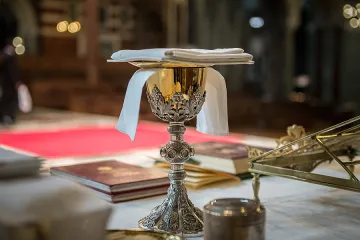London, England, Mar 4, 2023 / 04:00 am
Like the proverbial big red London bus, you wait a long time for a Catholic-interest exhibition and two arrive at the same time. Today, half of London’s four major museums are focusing on Catholic culture, and both exhibitions are novel for their venues.
The Victoria and Albert Museum’s exhibition “Donatello: Sculpting the Renaissance,” open through June 11, is the first U.K. exhibition to focus on this 14th-century pioneer of the Italian Renaissance. The exhibition title might credit only Donatello, but numerous contemporaries and followers are also on view.
The other exhibition, “Spain and the Hispanic World,” at the Royal Academy of the Arts through April 10, explores the art of Spain and its former colonies in the New World — all courtesy of the Hispanic Society of America. Based in New York, this is the greatest repository that exists of Spanish culture across continents.
Donatello’s sacred art
The Victoria and Albert Museum is more inclined to offbeat blockbusters such as “A Brief History of Underwear” (2017) and “Fashioning Masculinities” (2022). Tackling Renaissance sculpture is unusual despite the enthusiasm shown by the founders, Queen Victoria and Prince Albert. Victoria never went to Rome but was a frequent visitor to Florence. Life-copies of the city’s two most famous statues of David — by Donatello and Michelangelo — were made during her reign. Although Donatello’s sculpture was one of the very few he created that might not have met Victorian standards of modesty, the royal couple was more open-minded than most at the time.
The 19th-century copy of Donatello’s bronze David (circa 1440) is on view at the London show, having been moved from the other side of the museum. The last time the original left Florence was in 1930, accompanied by Benito Mussolini on a publicity mission to the Royal Academy. The Victoria and Albert Museum has instead secured Donatello’s fully clothed version of David (1408), in marble. It is the first work that greets visitors to the show. Created when Donatello was only 22 years old, its carefully composed naturalism sets the scene for the sculptures he made later in his long life.
Taking center stage, after the marble David, is a life-size bronze crucifix by Donatello himself, lent by a church, not a museum. This is part of what makes the exhibition so remarkable. Many of the works would look more appropriate back in their original sacred setting. Most have long since been acquired by museums. Carved forms are something that Catholics are still accustomed to seeing at Mass, unlike Renaissance paintings that once served a pious purpose but for generations have been lining the walls of public galleries. In the case of the Donatello crucifix, it’s displayed between two sculptures in a composition that suggests a reworking of the Calvary spectacle. Taking the place of Dismas and the Impenitent Thief are bronze statues of a bishop and St. George.
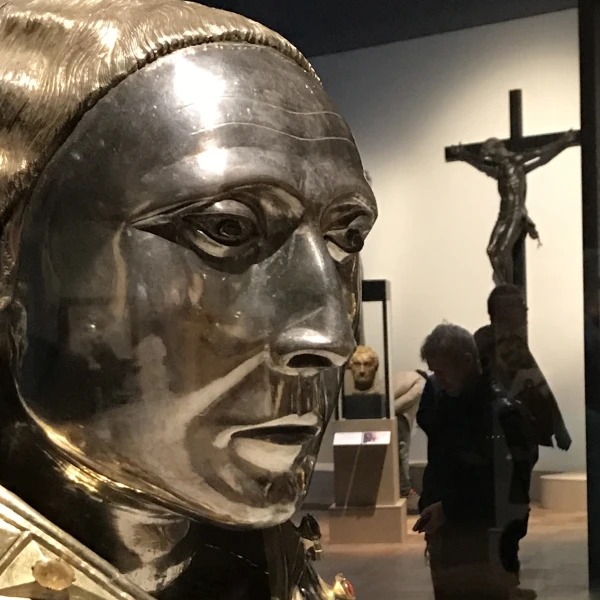
Seeing 150 works by Donatello and his contemporaries should remind any visitor that for around a thousand years the only European art that mattered was religious. Most of the works at this exhibition are decidedly Catholic. The Madonna and Child clearly had special meaning for artists of the Renaissance. Donatello made them more human and, at a technical level, mastered the art of perspective in shallow-relief carving.
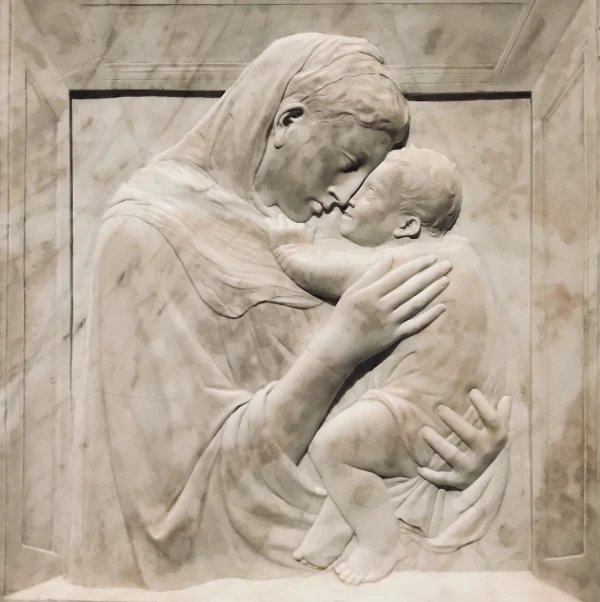
Images of Christ and the Virgin Mary are backed up by an abundance of saints. In their day, if you didn’t see them at church or home, they stood proudly in town squares or served a protective purpose in niches above the dangerous streets of old Europe. Viewers no longer see the context. Renaissance devotional imagery has become art removed from purpose, unlike the figures from classical antiquity that Donatello and others revived. These were fun and playful, without ever serving a sacred purpose.
Old World meets New
For “Spain and the Hispanic World,” the curators have shown the full extent of Spanish art. More than 2,000 years of this history was before the birth of Christ. As Christian art began to emerge in the early centuries A.D., the exhibition looks toward the Arab conquest of Spain. This soon became a hybrid of Christian and Muslim art. From the time of the Reconquest, Spanish rulers made a concerted effort to promote Catholicism. These works of profound power and mysticism are at the heart of the exhibition. There are secular interludes, however, such as the ever-popular Francisco Goya. This was a devout believer frequently disappointed by the actions of the Church and clergy. There are none of his anticlerical works on show here. Nor are there any by the artists who make up the other half of the exhibition.
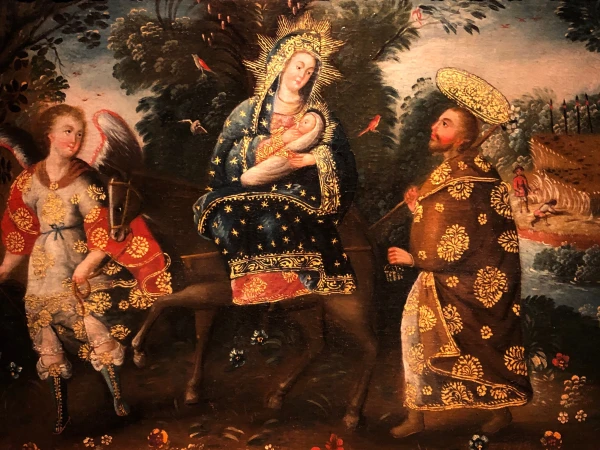
Wherever the Spanish and Portuguese colonizers went, they were followed by missionaries. The Hispanic World section of this show gives visitors the untarnished glory of Catholic art adapted to a new audience. There is charm, ingenuity, and an absence of disparagement of Catholic input. The Jesuits and other orders are, for a change, given credit for encouraging creative activity while trying to shield the indigenous populations from the excesses of the conquistadors and their successors. The spirit of the Robert De Niro/Jeremy Irons classic “The Mission” hovers gently over the Church in the New World. The secular colonizers are the villains here, depicted in maps, portraits, and other paintings that show their ambition, usually at the expense of the conquered peoples.
The sacred art of the Hispanic Empires is full of splendor, power, and pain. At this exhibition there are none of those Spanish-inspired crucifixes that surpass the reality of Christ’s death with Kensington gore galore. The only crucifixes on display are from the Old World, in monochromatic precious metal. Paintings are another matter. Whether from Spain or the Spanish empire, they are intense and deeply spiritual. Strangely, there are no painted images of the crucifixion. Instead, the subject matter ranges from the sorrowful austerity of St. Peter of Alcantara and St. Theresa (Bolivia, 1720s) to the Immaculate Conception, with Mary surrounded by a profusion of cherubic angels (Mexico, 1640). In Spain, El Greco’s tortuous figures from the late 16th century are continued 300 years later in a painting by Ignacio Zuloaga showing a group of penitents carrying an image of Christ so vivid and severe it seems to have just been taken down from a cross.
(Story continues below)
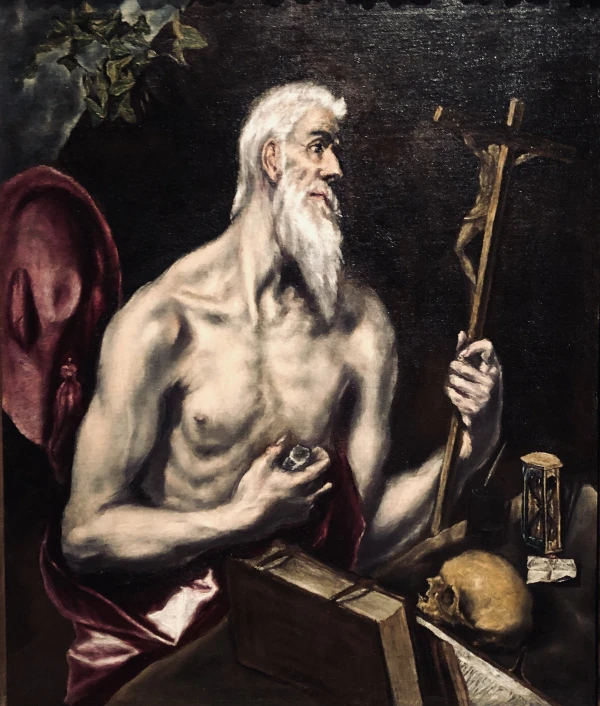
There is an absence of depictions of what might be the most reproduced Christian image of all: Our Lady of Guadalupe. The original is not, of course, by any human hand. The Aztec convert Juan Diego was given the divinely decorated cloak by the Virgin Mary herself in 1531. Within the textile are symbols of pre-Christian belief, not least the crescent moon under Our Lady’s feet — thought to represent the triumph of light and goodness over the old Aztec god of darkness.
Both the Victoria and Albert Museum and the Royal Academy provide reminders that Catholicism was a religion committed to visual stimulation, especially for those who couldn’t read. Whether it was Roman antiquity or pre-Conquest Latin America, the universal Church was pragmatic enough not to cancel everything from the pagan past.




